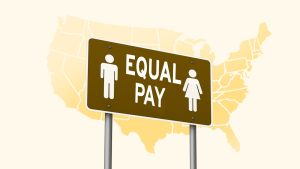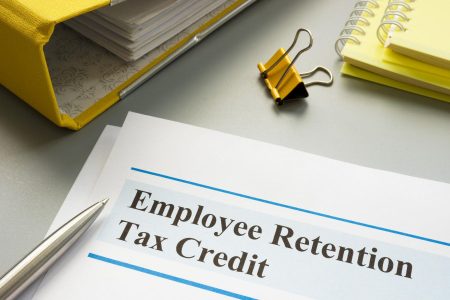Filing an extension can give you extra time to complete your tax return, typically pushing the deadline from April to October. But what happens if you file an extension but owe money? Filing an extension does not give you extra time to pay any taxes owed. If you may owe taxes but need more time to gather documents or consult a tax professional, it is important to understand the consequences of filing an extension without paying your balance. Failing to pay by the original deadline can lead to penalties and interest, increasing the amount you owe over time.
Working with a financial advisor or tax professional can help you manage payments, minimize penalties and develop a plan to avoid future tax surprises.
What Happens If I File an Extension, But Owe Money?
When you file an extension, you receive extra time to file your return but not to pay your taxes. If you owe money, you must pay by the original tax deadline (usually April 15). Otherwise, the IRS will begin assessing interest and possibly penalties on the unpaid amount. You can submit Form 4868 to request an extension. However, any unpaid balance starts accruing interest from the original due date.
The IRS generally charges a failure-to-pay penalty. This 0.5% of the unpaid taxes for each month or part of a month after the due date, up to a maximum of 25%. In addition, interest accrues on the unpaid tax at the federal short-term rate plus 3%. Over time, these costs can add up significantly if the balance remains unpaid.
Penalties
- Failure-to-pay penalty: This is typically calculated as 0.5% of the unpaid tax amount for each month or partial month that the tax remains unpaid. This penalty can accumulate until it reaches a maximum of 25% of the total unpaid taxes.
- Failure-to-file penalty: This often carries a more severe penalty. If you miss both the payment and filing deadlines, the IRS imposes a penalty of 5% of the unpaid taxes for each month or part of a month that your return is late, also capping at 25%.
Both penalties may apply in the same month. In this case, the failure-to-file penalty is reduced by the amount of the failure-to-pay penalty for that month. However, even with this reduction, the combined penalties can still lead to a substantial increase in the total amount owed. Interest will also accrue on the unpaid balance, further compounding the financial burden over time.
How to Avoid Penalties

To avoid or at least minimize penalties, it is critical to pay as much of your estimated tax liability as possible by the original tax deadline, even if you plan to file an extension. The IRS can waive penalties for taxpayers who pay at least 90% of their total tax liability by the deadline, but you have to request the waiver. If you are unsure of your exact tax bill, submitting an estimated payment can help prevent unnecessary penalties.
If you cannot pay the full amount owed, you may be able to set up a payment plan. The IRS offers short-term and long-term installment agreements that allow taxpayers to pay off their debt over time.
Communicating proactively with the IRS is also key. Taxpayers who engage early to resolve their balance often avoid more serious enforcement actions, such as liens or levies.
Payment Options
If you have penalties or cannot pay everything by the deadline, explore available payment options as soon as possible. The IRS provides several solutions to help taxpayers manage their balances and avoid escalating financial consequences.
One option is a payment plan so you can pay your debt in monthly installments over time. Short-term payment plans are available for smaller balances, typically payable within 180 days. Long-term installment agreements spread payments over several years. Either way, interest and penalties continue to accrue until the balance is paid in full. However, a payment agreement can prevent more severe collection actions.
For those facing significant financial hardship, applying for an Offer in Compromise may be an option. This program lets you settle your tax debt for less than the full amount owed. However, you must demonstrate that paying the full balance would cause undue financial strain.
Alternatively, some taxpayers may qualify for a temporary delay in collection. This gives you extra time to improve your financial situation before resuming payments.
How to File an Extension
Filing a tax extension is a straightforward process that provides additional time to submit your return. It typically extends the deadline by six months.
Most individual taxpayers use Form 4868, the Application for Automatic Extension of Time to File U.S. Individual Income Tax Return. You can file this form electronically through tax preparation software, your tax professional or the IRS Free File system. Filing electronically can provide confirmation that your extension request was received. You should note that you must file the extension by the original due date or it won’t be counted as filing timely
Even though the extension grants more time to file, it does not extend the deadline to pay any taxes owed. You should estimate your tax liability as accurately as possible and submit payment by the original tax deadline to avoid penalties and interest. If you make a payment when requesting the extension, it will be applied to your outstanding balance.
For businesses or other types of filers, different forms, such as Form 7004, may be required. Those who live abroad or serve in a combat zone may automatically qualify for additional time without needing an extension form.
Bottom Line

If you file an extension but owe taxes, the IRS will expect payment by the original due date. This is to avoid penalties and interest. While an extension provides valuable time to prepare your return, it is not a deferral of payment. To minimize financial consequences, pay as much of your estimated tax bill as possible and explore payment plan options if needed. Consider working with a financial advisor or tax professional to stay compliant and protect your financial well-being.
Tax Planning Tips
- A financial advisor can help you create a plan to manage your taxes. Finding a financial advisor doesn’t have to be hard. SmartAsset’s free tool matches you with vetted financial advisors who serve your area, and you can have a free introductory call with your advisor matches to decide which one you feel is right for you. If you’re ready to find an advisor who can help you achieve your financial goals, get started now.
- If you want to know how much you could pay in taxes for the sale on an investment, SmartAsset’s capital gains calculator can help you get an estimate.
Photo credit: ©iStock.com/kate_sept2004, ©iStock.com/Dzmitry Dzemidovich, ©iStock.com/Portra
Read the full article here









